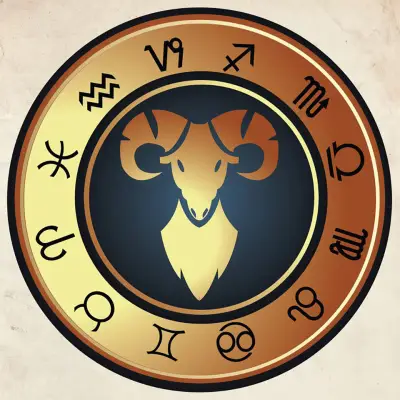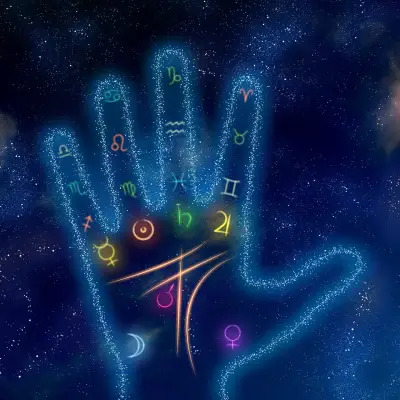The Scorpio constellation, also known as Scorpius, is one of the most intriguing and recognisable formations in the sky. Whether you're a stargazing enthusiast or just curious about what you see when you look up, this guide will help you explore the fascinating Scorpio constellation.
Jump to:
What is the Scorpio Constellation?
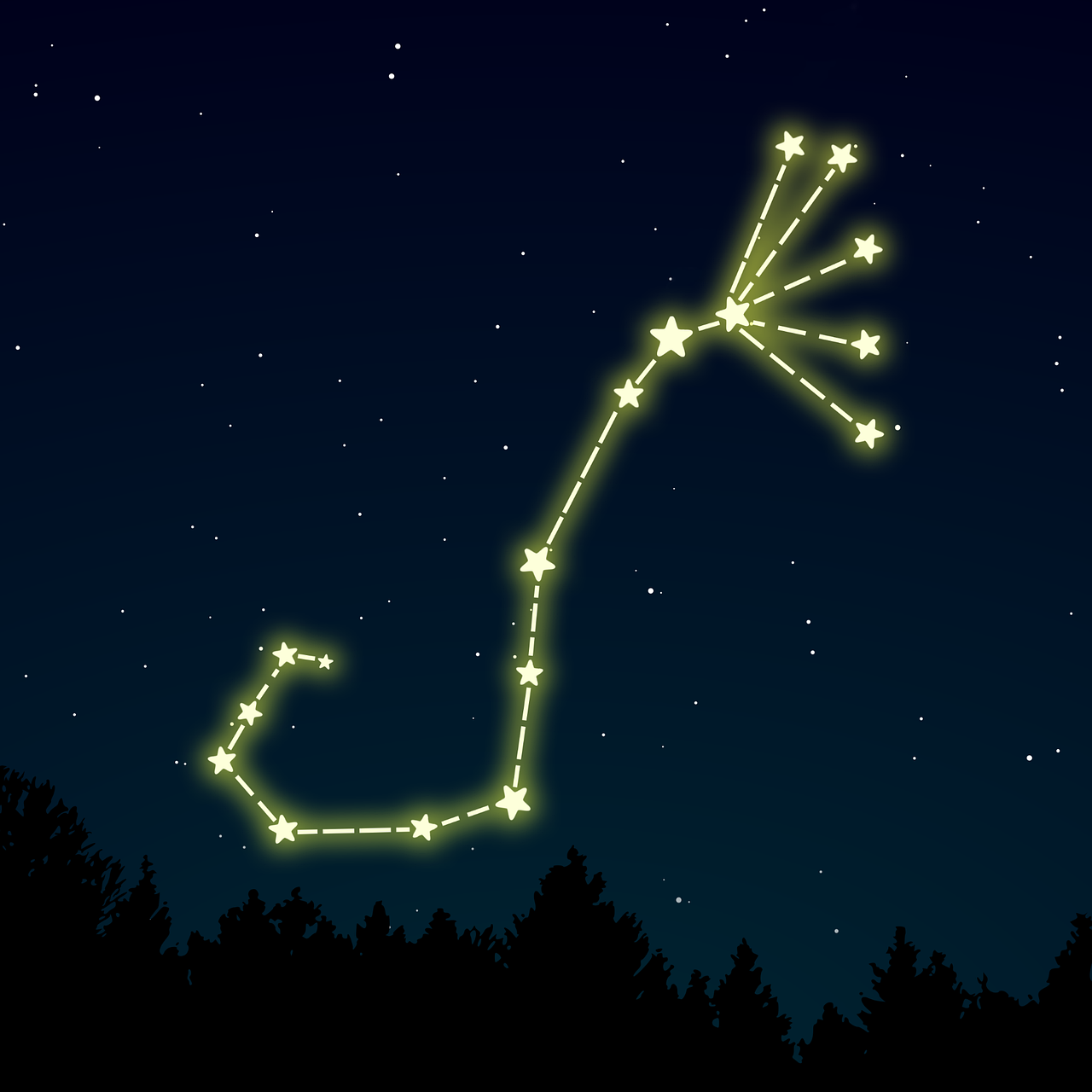
The Scorpio constellation, or Scorpius, is one of the 88 modern constellations and holds a place in both astronomy and mythology. It's known for its distinctive shape, which resembles a scorpion, complete with a curved tail and stinger. This shape makes it relatively easy to spot among the stars.
Recommended for you!
Best SellersThe Stars of the Scorpio Constellation
One reason Scorpius is so captivating is its bright stars. Each contributes to the constellation's distinctive shape and fascinating appearance in the night sky. Let’s take a look at some of the key stars that make up this constellation.
Antares
Antares is the brightest star in the Scorpio constellation. It’s a red supergiant star, often referred to as the "Heart of the Scorpion" because of its distinct reddish hue. Antares is one of the brightest stars in the night sky, shining with a luminosity approximately 10,000 times that of the Sun. It is located in the "body" of the scorpion.
Antares is a massive star, with a diameter roughly 700 times that of the Sun. It's nearing the end of its life and will eventually explode as a supernova. The name "Antares" comes from the ancient Greek for "rival of Mars" due to its similar colour to the red planet. Its prominence and striking appearance make Antares a key feature of Scorpius.
Shaula
Located in the "tail" of the scorpion, Shaula is the second brightest star in the constellation. It’s a binary star system, meaning it’s made up of two stars that orbit each other. Shaula is actually a triple star system, with two of the stars forming a close binary pair and the third orbiting further away.
Shaula is also known as Lambda Scorpii and is situated around 570 light-years from Earth. Its name derives from the Arabic word for "raised," referencing the raised tail of the scorpion. Shaula's brightness and position make it an important marker in the night sky.
Sargas
Another bright star in Scorpius, Sargas is found in the scorpion's "tail" and is known for its brightness and yellowish colour. Sargas, also known as Theta Scorpii, is a giant star located about 300 light-years from Earth.
With a diameter approximately 26 times that of the Sun and a luminosity 1,800 times greater, Sargas stands out in the constellation. The name "Sargas" is derived from Sumerian, though its exact meaning remains unclear. The star's prominent yellowish glow helps distinguish it from its neighbours.
Dschubba
Dschubba, also known as Delta Scorpii, is another notable star in the Scorpio constellation. Located in the "head" of the scorpion, Dschubba is a variable star, meaning its brightness changes over time. It’s approximately 490 light-years from Earth and is part of a multiple star system.
The name "Dschubba" comes from the Arabic word for "forehead," highlighting its position in the scorpion’s head. Dschubba's variability and position make it an interesting star for astronomers and stargazers alike.
Acrab
Acrab, also known as Beta Scorpii, is a multiple star system located near the "head" of the scorpion. It consists of at least six stars, with two main components visible to the naked eye. These stars orbit each other and are located about 530 light-years from Earth.
The name "Acrab" is derived from the Arabic word for "scorpion," fitting for its position in the constellation. Acrab's complexity and brightness make it a fascinating object of study.
Alniyat
Alniyat, or Sigma Scorpii, is another bright star located near Antares. This massive star is about 700 light-years away and shines with a blue-white hue. Alniyat is an evolved star, having already left the main sequence and expanded significantly.
The name "Alniyat" comes from the Arabic word for "arteries" or "veins," likely referencing its proximity to Antares, the heart of the scorpion. Its brightness and colour add to the constellation's rich tapestry.
Jabbah
Jabbah, or Nu Scorpii, is a multiple star system located in the northern part of the constellation. It consists of at least five stars, with the primary pair visible through small telescopes. Jabbah is approximately 470 light-years from Earth.
The name "Jabbah" is derived from Arabic, though its exact meaning is uncertain. The star system's complexity and beauty make it a popular target for amateur astronomers.
These stars and others in the constellation form the distinct shape that stargazers recognise as a scorpion. Each star, with its unique characteristics and position, contributes to the overall beauty and intrigue of the Scorpio constellation.
Mythology of the Scorpio Constellation
The Scorpio constellation has a rich mythological background. In Greek mythology, Scorpius is associated with the story of Orion, the hunter. According to legend, Orion boasted that he could kill any creature on Earth. This angered the goddess Artemis and her mother, Leto, who sent a giant scorpion to defeat him. The scorpion succeeded, and both Orion and the scorpion were placed among the stars as constellations.
What Greek God is Scorpio?
In Greek mythology, the scorpion that represents the Scorpio constellation is not directly associated with a specific god but is linked to the tale involving Artemis and Orion. Artemis, the goddess of the hunt, played a key role in the story by sending the scorpion to challenge Orion.
Why Does Scorpio Have Two Constellations?
You might have heard that Scorpio has two constellations. This is because of the story of Orion and Scorpius. In the sky, these two constellations are positioned such that they never appear in the sky at the same time. When Scorpius rises, Orion sets, and vice versa. This celestial arrangement symbolises their eternal chase across the sky.
Viewing Scorpius: Where and When
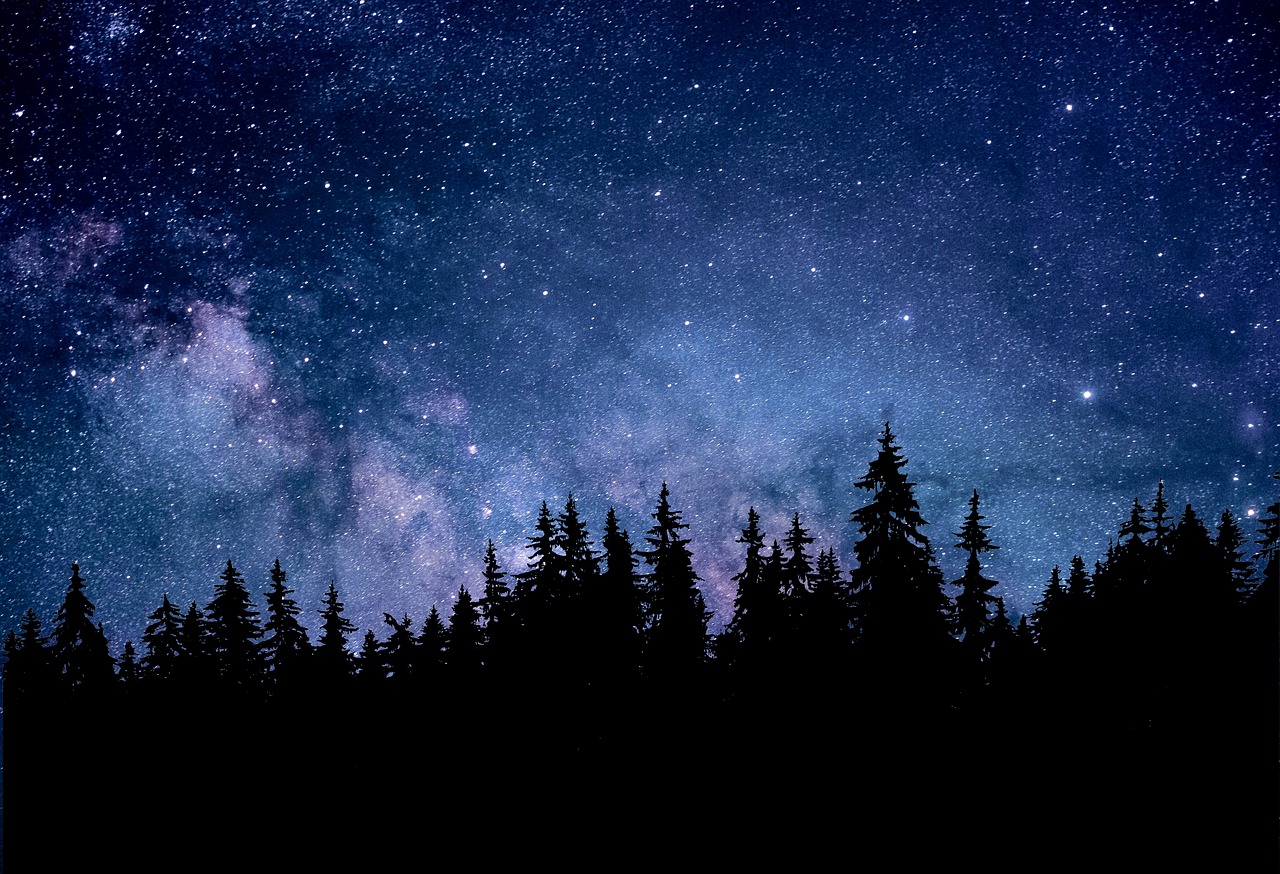
So, where can you find Scorpius in the night sky? The constellation is located in the southern celestial hemisphere, making it easier to view from locations in the Southern Hemisphere. However, it’s also visible in the Northern Hemisphere during the summer months.
Can You See Scorpius in the UK?
You can see Scorpius in the UK, but it can be a bit challenging. The constellation is low on the horizon and best viewed during the summer months when it’s at its highest point in the sky. For the best viewing experience, find a location with a clear view of the southern horizon and minimal light pollution.
What Does Scorpio Look Like in the Sky?
When you look up at the night sky, Scorpius can be identified by its characteristic "S" shape, which resembles a scorpion. The bright red star Antares marks the heart of the scorpion, and the constellation's tail curves downwards, ending with the stars Shaula and Lesath.
What Month is Best to View Scorpio?
The Scorpio constellation is best seen in the night sky during certain months. If you’re in the Northern Hemisphere, Scorpius is most visible during the summer months. Specifically, from June to August, it can be seen high in the sky. In the Southern Hemisphere, you can catch a glimpse of Scorpius from March to October. So, if you’re planning to do some stargazing, these are the months to keep in mind.
What Tools Can Help Me Identify Scorpius?
Several tools and apps can help you identify Scorpius in the night sky:
- Star charts: Printed maps of the night sky that show the positions of constellations.
- Mobile apps: Apps like SkySafari, Star Walk, and Stellarium can use your phone's GPS and camera to show the constellations in real time.
- Telescopes and binoculars: These can provide a closer view of the stars and deep-sky objects within Scorpius.
What is the Best Way to Photograph Scorpius?
Photographing Scorpius can be a rewarding experience. For the best results:
- Use a DSLR or mirrorless camera with manual settings.
- Employ a wide-angle lens to capture the entire constellation.
- Set your camera on a tripod to keep it steady during long exposures.
- Use a low ISO setting to reduce noise.
- Experiment with exposure times between 10 to 30 seconds to capture the stars without too much motion blur.
Want to put your knowledge of Astrology to the test?
Centre of Excellence has you covered.
Sample the first 2 modules of our Astrology Diploma Course for FREE!
Fun Facts about Scorpius
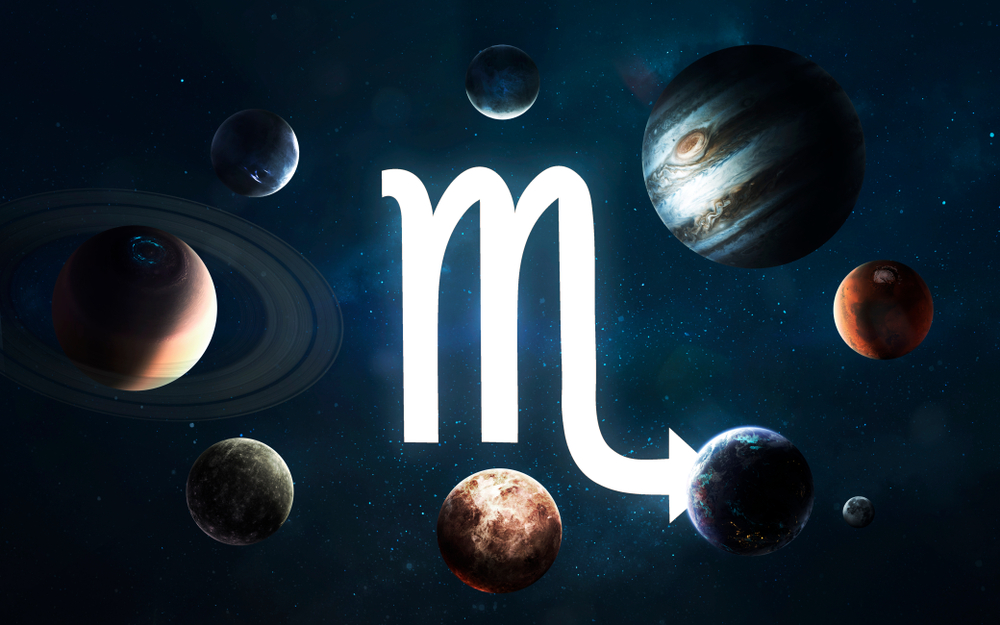
- Zodiac Sign: Scorpius is one of the twelve zodiac constellations, and people born between October 23 and November 22 fall under the Scorpio zodiac sign.
- Deep-Sky Objects: The Scorpio constellation is home to several interesting deep-sky objects, including star clusters like the Butterfly Cluster (M6) and the Ptolemy Cluster (M7).
- Cultural Significance: Various cultures have different stories and associations with Scorpius. In Polynesian culture, the constellation is known as "Maui’s Fishhook" and is part of their navigation lore.
Frequently Asked Questions about the Scorpio Constellation
What is the Origin of the Name "Scorpius"?
The name "Scorpius" comes from Latin, meaning "scorpion." The constellation has been recognised since ancient times and has been associated with the shape of a scorpion due to its distinct curved tail and stinger.
How Far Away is the Scorpio Constellation?
The stars in the Scorpio constellation are at various distances from Earth. For example, Antares, the brightest star in Scorpius, is approximately 550 light-years away. Other stars in the constellation range from a few hundred to over a thousand light-years away.
Is Scorpio a Zodiac Constellation?
Scorpius is one of the twelve zodiac constellations. People born between October 23 and November 22 fall under the Scorpio zodiac sign. In astrology, Scorpio is associated with traits such as intensity, passion, and determination.
How Many Stars are in the Scorpio Constellation?
Scorpius contains numerous stars, but there are around 18 main stars that outline its shape. Among these, there are several bright and notable stars, including Antares, Shaula, and Sargas.
What are Some Interesting Deep-Sky Objects in Scorpius?
Scorpius is home to several fascinating deep-sky objects, including:
- Butterfly Cluster (M6): An open star cluster that resembles the shape of a butterfly.
- Ptolemy Cluster (M7): Another bright open cluster located near the scorpion's tail.
- Cat's Paw Nebula (NGC 6334): A star-forming region that resembles a cat's paw.
- Lobster Nebula (NGC 6357): A large nebula also known for its star-forming activity.
Why is Antares Called the "Rival of Mars"?
Antares is often referred to as the "Rival of Mars" because of its bright, reddish appearance, which is similar to Mars's colour. The name "Antares" itself is derived from ancient Greek, meaning "against Ares" (Ares being the Greek equivalent of Mars).
Can Scorpius be Seen from Urban Areas?
While it is possible to see Scorpius from urban areas, light pollution can make it difficult to view the constellation in all its glory. For the best stargazing experience, it is recommended to find a location with minimal light pollution, such as a rural area or a designated dark sky park.
Are There Any Meteor Showers Associated with Scorpius?
The Scorpius constellation is associated with the June Scorpiids meteor shower, which occurs annually. Although this meteor shower is not as prominent as others, such as the Perseids, it can still provide a delightful sight for avid stargazers.
Are There Any Planets Orbiting Stars in Scorpius?
Several exoplanets have been discovered orbiting stars in the Scorpius constellation. For example, HD 147018 b and c are two exoplanets orbiting the star HD 147018, located within Scorpius. The study of exoplanets in this constellation, as in others, is ongoing and continually reveals new and exciting findings.
How Does Scorpius Compare to Other Constellations in Size?
Scorpius is the 33rd largest constellation in the sky, occupying an area of 497 square degrees. While not the largest, it is one of the most visually striking constellations due to its bright stars and distinctive shape.
Recommended for you!
Best SellersStudy Astronomy for £29
If the Scorpio constellation has sparked your interest in the stars, why not take your curiosity to the next level? Centre of Excellence offers an Astronomy Diploma Course that covers everything you need to know about the night sky, constellations, and much more.
By following the link, you can enrol in the course for a discounted price of £29.


